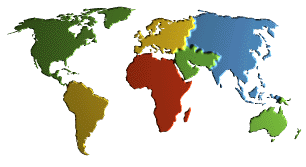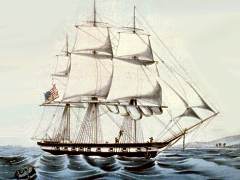
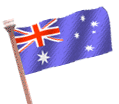
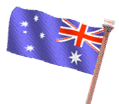
Cook's charting of the East Coast of New Holland (Australia) during his first voyage nearly cost the expedition the Endeavour when it ran a-ground upon the Great Barrier Reef. It took a couple of months to repair the vessel and then she sailed on to Batavia. Captain Cook is also one of the first sailors to prevent scurvy on such a long voyage. Cook revisited Australia when he landed in Van Diemen's Land (Tasmania) on 26 January 1777, although again he was not able to determine whether Tasmania was part of New Holland or an island. Bass and Flinders finally settled this matter in 1798.
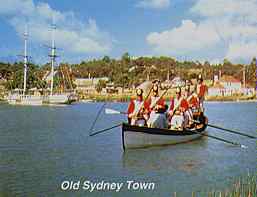
On May 13, 1787, British Captain Arthur Phillip set sail from Portsmouth, England, to establish a convict colony in Australia. He sailed with 11 ships, 759 convicts, 191 females 13 children of convicts, 211 marines, 46 wives and children of marines, and his staff of nine. Phillip landed at Botany Bay on the eastern coast of Australia on January 18, 1788, travelled some kilometres north to find a more suitable place for a place to land and came ashore at Sydney Cove on January 26.
The orbit of the planet Venus back in 1769 played a major part as to why Endeavour Bar, 370 tons, bought for 2,800 pounds would set sail for the south seas where this phenomenon could be watched in favourable conditions. Captain James Cook, who was a lieutenant, set sail on August 26th 1768 to watch this and was instructed to find the incognito "Terra Australis" and if he didn't find it sail on to New Zealand and explore this land and then return to England. Even though the Dutch had discovered Australia before Cook their reports were negative and repellent, therefore Cook's discovery of the entire East Coast and discovering this countries vast possibilities to be habituated by man, was one of the great results of his voyage in 1770.
After the "War of Independence" England needed to find urgently a new solution to their overflowing prisons across the country. Sir Joseph Banks in 1779 gave evidence before the "House of Commons" that New Holland was a place they could send these convicts, at this time though the then Government of the day was too busy elsewhere to act upon this suggestion. In 1785 Sir Admiral Young submitted a strong argument that if they sent the convicts to this new land, England would be rid of these convicts forever, finally a plan was set in motion.
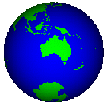
Nova Hollandia (Latin for'New Holland')
Why is "downunder" called Australia? From the early sixteenth century, European philosophers and map-makers assumed a great southern continent existed south of Asia. They called this hypothetical place "Terra Australis", Latin for 'southern land'.
It is believed that just maybe the Spaniards or the Dutch actually discovered Australia but to date no real proof has been attached to this or found for that matter. Christopher Columbus to this day doesn't know how close he came to finding this continent with his fact; "He argued that if the world were round, a ship sailing west, straight towards the sunset, must come upon the shores of further Asia". Ferdinand Magellan, in 1520, sailed down the east coast of South America, through the narrow passage, and into what he for the first time called Mare Pacificum, the quiet sea. This was the first important step towards the discovering of Australia. Cornelius Wyfliet wrote that "Australis Terra" is the most southern of all lands, and is separated from New Guinea by a narrow strait" and is only ever visited by marooned sailors but if it were to be visited and mapped it would become the fifth part of the world. There was a period in the world's history that on all the world maps where Australia is situated was left blank and other lands were included that we now know did not ever exist.
More credit should be given to the Dutch explorers Tasman and Van Diemen who by accident left behind them gained knowledge of the coastline of Australia to the Gulf of Carpentaria which included the Bight and New Zealand and wasn't altered till after Cook's voyage in 1770.
The first European contact with Australia was in the early seventeenth century, when Dutch explorers touched on parts of the Australian continent. After Dampier (1688), Australia remained in obscurity for nearly three quarters of a century.
